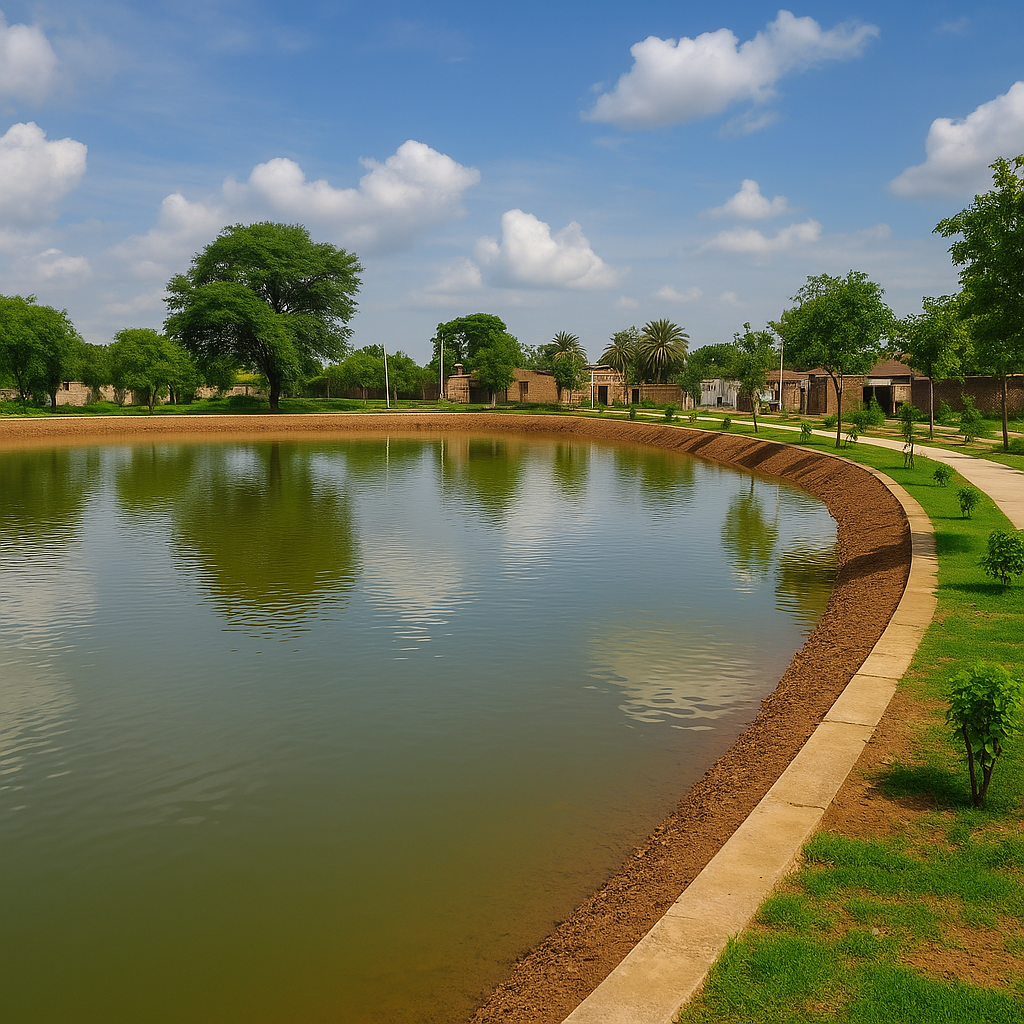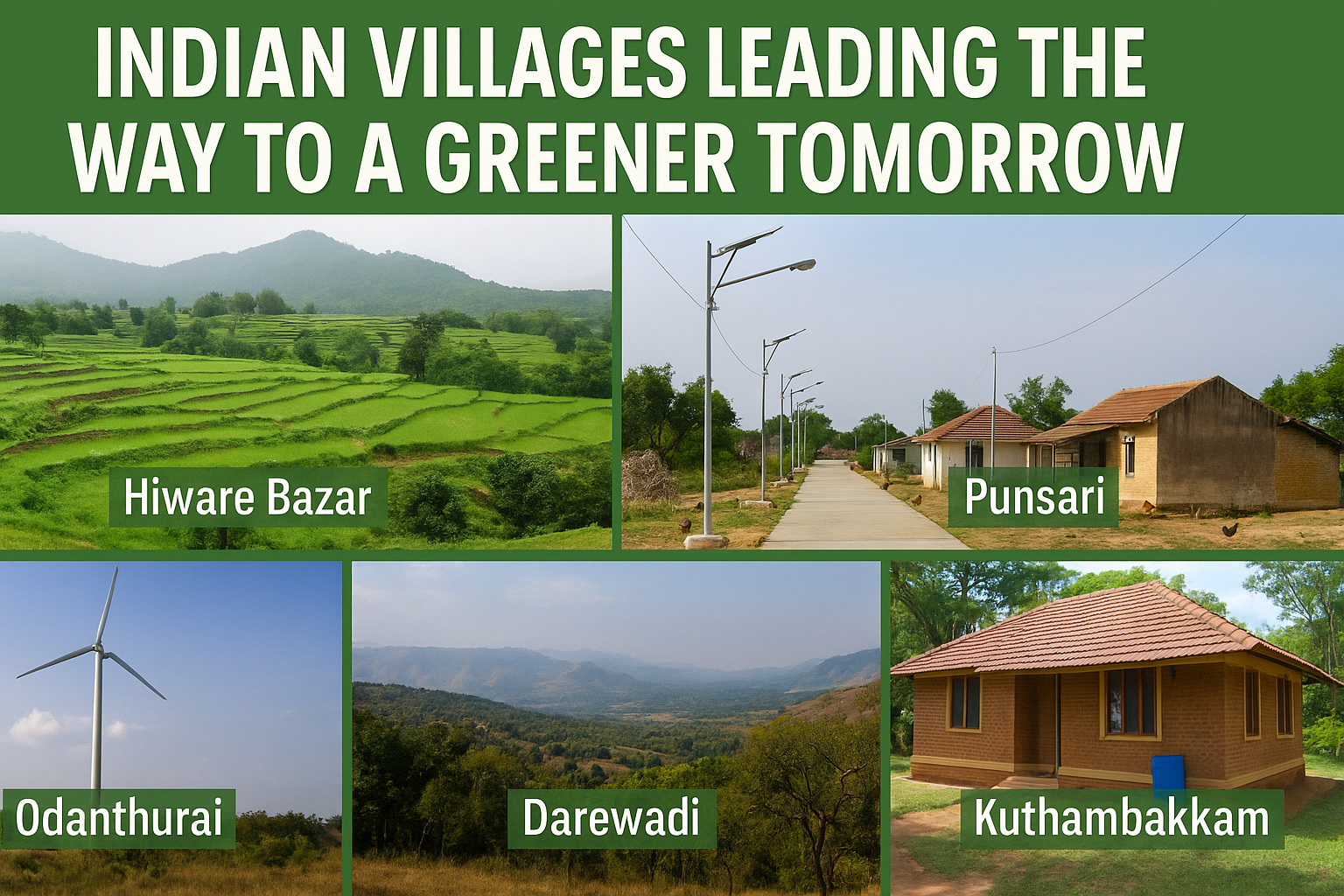Water is life. And for a nation like India - where the agricultural economy, rural existence, and even spirituality are water-dependent - the conservation and revitalization of water bodies is not merely a need, but an obligation.
Enter the Amrit Sarovar Mission - a strong mission undertaken by the Government of India to revive water bodies. It's not about digging holes in the ground or decorating lakes; it's about ownership by the community, green living, and connecting with our natural heritage.
Let's walk through how the Amrit Sarovar Mission is making a difference in villages, towns, and cities in India - one water body at a time.
What is the Amrit Sarovar Mission?
Launched on 24th April 2022 as a part of Azadi Ka Amrit Mahotsav, the Amrit Sarovar Mission is to create and revive a minimum of 75 water bodies in each district of the nation.
The vision is straightforward:
· Store more water
· Restore lost or abandoned ponds
· Enlist communities for conservation
· Create areas for celebration, greenery, and ecological balance
These bodies of water - referred to as "Amrit Sarovars" - symbolize liberty and sustainability. They are constructed or rehabilitated with local materials, usually with community involvement, instilling a feeling of ownership and pride among local residents.
Why Is This Mission So Important?
India is experiencing water stress. Climate change, urbanization, and over-extraction of groundwater have reduced fresh water to a shortage. Traditional lakes and ponds - which were community lifelines - have vanished or become contaminated.
The Amrit Sarovar Mission tackles these issues directly:
· Resurrects conventional water harvesting systems
· Recharges groundwater
· Enhances green cover
· Enhances biodiversity
· Ensures livelihood through MGNREGA and local labor
And most importantly, perhaps - it empowers individuals to connect with nature once more.
How Does It Work?
This is how the mission is carried out:
1. Identification of Land
Barren or degraded land is identified in every district. It may be common land, revenue land, or land donated by the public.
2. Community Engagement
Villagers, school going children, self-help groups, and local NGOs take part in awareness, plantation of trees, and maintenance.
3. Convergence of Schemes
Funds and human resources are drawn from various government schemes such as:
· MGNREGA
· PMKSY (Pradhan Mantri Krishi Sinchai Yojana)
· Jal Shakti Abhiyan
· State rural development departments
4. Design and Development
All Sarovars are 1 acre in size and hold approximately 10,000 cubic meters of water. Walkways, benches, solar streetlights, and plantation of trees are incorporated to create a community area.
Key Achievements So Far
The Amrit Sarovar Mission, as of 2024, has:
· Constructed more than 65,000 Sarovars throughout districts
· Created employment worth more than 1 crore person-days
· Restored cultural and religious traditions near water bodies
· Enhanced local ecosystems - with birds, fish, and trees returning to the areas
Some states like Uttar Pradesh, Madhya Pradesh, Rajasthan, and Jharkhand have shown remarkable progress in both scale and quality of implementation.
Real-Life Impact: Stories from the Ground
· Uttar Pradesh - From Barren to Blooming
In Barabanki, a vacant land next to a village school was transformed into a lovely Amrit Sarovar with plantation of trees, walkways, and a pond. Now, children learn nearby, birds nestle around it, and the groundwater level has risen.
· Rajasthan - Rainwater for All
In the arid belt of Jodhpur, an Amrit Sarovar now assists in the storage of rainwater, lowering water shortage for humans and animals in summer.
· Assam - A Festival at the Lake
In one village, a decades-old pond was restored and revitalized through the mission. It has now become a venue for Bihu festivals, fishing festivals, and so on.
Community: The Real Hero
What sets this mission apart from other infrastructure projects is that people are involved. From sharing local knowledge to participating in digging and planting - villagers have welcomed it with open arms.
Women's clubs are also taking a lead role - operating nurseries, planting trees, and raising awareness regarding water conservation.
When ownership is taken by people, sustainability follows naturally.
Quick Pointers
Following are some simplified learnings from the Amrit Sarovar Mission:
· Launched in April 2022 as part of Azadi Ka Amrit Mahotsav
· Target: 75 water bodies per district (total over 4.5 lakh)
· Multiple schemes converge - MGNREGA, PMKSY, Jal Shakti
· Community led - local volunteers, students, SHGs involved
· Ecology focus - plantation of trees, biodiversity, recharging groundwater
· Job opportunities created - rural employment via water body creation
· Resurrects culture - provides areas for festivals and tranquility
The Road Ahead
Though the mission is a success already, there is still a long way to go. Some major areas to work on:
· Long-term plans for maintenance to prevent neglect after development
· Improved data monitoring on groundwater and ecological footprint
· Urban engagement - urban areas can also replicate this model for ponds and lakes
· Private collaborations - NGOs and CSR can enhance scale and innovation
Last Words
The Amrit Sarovar Mission is a reminder of something easy but deep:
Water is not merely a resource - it's a legacy.
By restoring sarovars, we are not merely conserving water - we are bringing life, culture, community, and the environment back.
It's a lovely demonstration of government vision, people's action, and local passion coming together for a greener, sustainable India.
No matter if you're in a city or village - this mission demonstrates that climate action begins at the local level, pond by pond.
Let's save our water. Let's save our future.
related Articles
From Stardom to Sustainability: How Dia Mirza Became a UN Environmental Goodwill Ambassador
In a world where fame sometimes equals glamour and excess, Dia Mirza is a rare breath of fresh air. Gracing the silver screen with her performance skills and gracious presence, Dia has now gained equal fame as an environmentalist. Her journey from the movie screen to being appointed as the United Nations Environment Goodwill Ambassador for India is inspiring and effective.
CSR Meets Sustainability: How Govt Policy is Driving Climate-Friendly Corporate Responsibility
Sustainability is no longer a choice - it's a necessity in today's world. As climate change continues to impact lives and livelihoods, companies are being asked to step up and own responsibility not only for profits, but for the planet. This is where sustainability and CSR (Corporate Social Responsibility) overlap, particularly in a nation like India where government policy is increasingly influencing corporate actions.
5 Indian Villages Leading the Way to a Greener Tomorrow
When we hear the phrase "sustainable living" or "eco-innovation," our mind immediately jumps to large cities, technology centers, or global summits. But in truth, India's smallest villages are making some of the greatest contributions towards combatting climate change and building a greener tomorrow.
Mission LiFE: India’s Global Call for Sustainable Living
In a world struggling with climate change, pollution, and depleting natural resources, India has taken a bold and inspiring step forward. The country’s new movement, Mission LiFE (Lifestyle for Environment), calls on each of us - individuals, communities, and businesses - to adopt sustainable habits in our daily lives.




